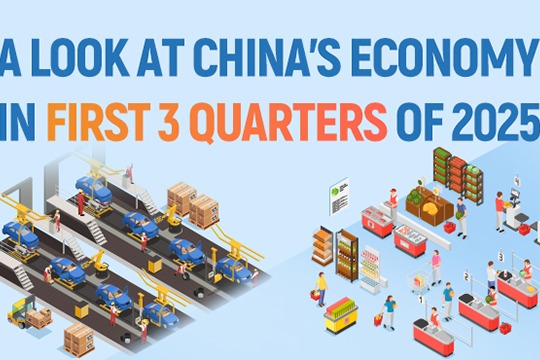PBOC warns of debt pileup amid stimulus


Governor: Policies should focus on economic stability, risk prevention
The central bank governor urged preventing risk from high debt levels, as financial stimulus ramps up to curb prolonged economic contractions caused by the unprecedented novel coronavirus pandemic, according to an article he authored.
The nation's macro leverage level, or the total debt-to-GDP ratio, is likely to rise continually, and the task of the macroeconomic policies is to keep the ratio stable, the People's Bank of China said. Ideally, the policies should strike a balance between economic stability and risk prevention to leave room for long-term, sustainable growth, PBOC Governor Yi Gang said in an article written for the magazine run by the country's forex regulator on Sunday.
Due to the COVID-19 shocks, China will take countercyclical measures, keeping liquidity at a reasonably ample level and sustaining proper growth of money and credit supply. Targeted measures will support companies affected by the virus by offering sufficient capital, he said.
Fast expansion of money supply and bank lending has been reflected by the financial data in March, as the new yuan loans and aggregate financing soared to new levels.
However, even before the outbreak, the central bank had started keeping an eye on the rising leverage level, especially in the household sector, adding to concerns about the impact on the economic growth, which in the first quarter contracted by 6.8 percent to its weakest in decades.
A survey, run by the PBOC's statistics and research department, said on Friday that the average debt-to-asset ratio of urban families was 9.1 percent as of October 2019. About 75.9 percent of the debt was in terms of mortgage loans. The debt ratio to financial assets is higher, which may lead to liquidity risks, it warned, although the overall household debt risk is under control.
Despite the rapid growth in consumer lending, financial stimulus amid the virus outbreak will also add to the debt burden of companies and local governments, as bank lending is the main driver of infrastructure construction and corporate investment to save jobs, said analysts.
"But too much aggressive stimulus may lead to inflation and a surge in the macro leverage ratio," the PBOC governor warned. "Thus, (China) needs to keep using the conventional monetary policy tools as long as possible, to support the long-term development strategy."
Yi stressed that, in the current stage, "a proper policy choice is to retain a stable macro leverage ratio", requiring a broad stabilization of economic growth, house prices and market expectations, considering the rising debt and the need to prevent risks.
The country's macro leverage level increased fast during the last decade, up from 145.4 percent in 2008 to 248.7 percent in 2018. The leverage ratio for corporates surged to 159.8 percent at the end of 2016, which was a relatively higher level compared to other countries, said Yi.
Yin Zhongli, a senior researcher at the National Institution for Finance and Development, a think tank under the Chinese Academy of Social Sciences, said China should pay attention to debt risks arising from low-income groups, as people cannot repay mortgage loans if they lose jobs.
"Smaller businesses in the service sector may also face survival challenges amid the pandemic, which can also create debt risks," said Yin.
At a time when bank lending has been increasing, direct financing through bond and stock markets has shrunk after 2008. The central bank said that the securities asset-to-GDP ratio dropped to 135.5 percent by the end of 2018, down from 166.9 percent at the end of 2007.The change showed that the real economy was relying much more on borrowings from banks. The market value of stocks to GDP ratio dropped to 44.6 percent at the end of 2018, from 120.1 percent in 2007, the article said.
Reform measures, including the registration system for initial public offerings and the special financial courts, should be promoted, allowing investors to gain income at the same time of taking risks, said the PBOC governor.
Domestic financial services, such as asset management, pension and health insurance, still have huge potential to develop, judging by the experience of foreign financial institutions, said Yi.
He said it is important to monitor the debt levels of the household sector, compared with the individual income levels and the property loans. The country should also optimize land supplies and improve the local government debt mechanism and reduce the reliance on fiscal income from land sales.




































